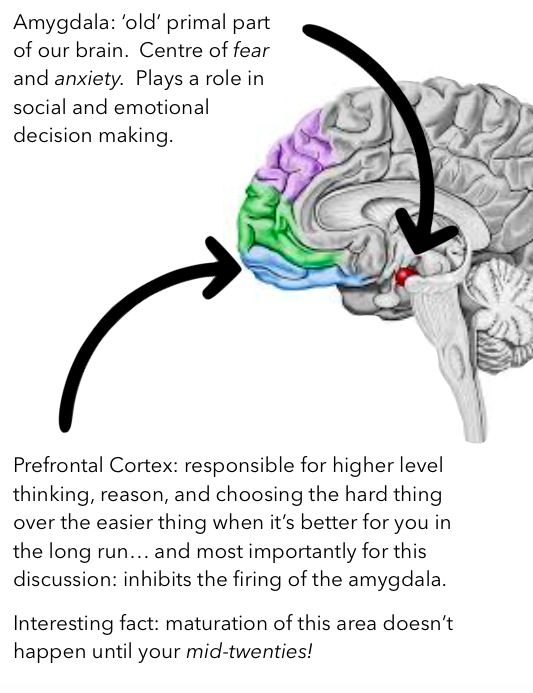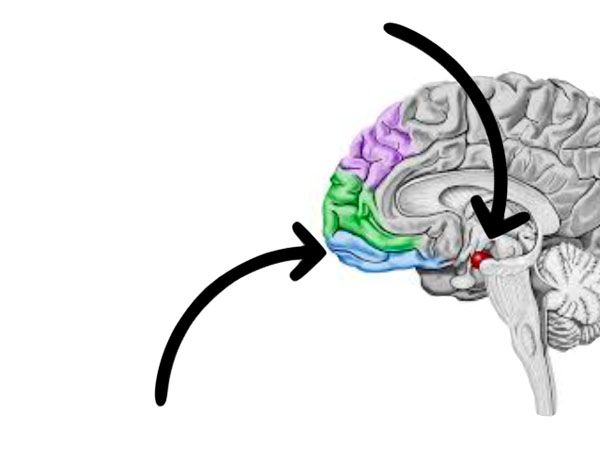Statistics Canada says that 25% of people experience anxiety regularly. That’s a lot. Too many.
Are we as a culture creating this epidemic?
Consider the constant sources of stress and fear in our everyday life: packed schedules, poor eating habits, feelings of disconnection, fear based news, media and TV shows, etc… We are inundated with a kaleidoscope of stress—no wonder our amygdala is working overtime.
Thankfully, silencing our amygdala is our Prefrontal Cortex—an area of the brain responsible for rational thinking and a keel for our emotional ship.

BEST practices to reduce fear and anxiety?
1. Calm your mind by filtering the content it’s exposed to.
2. Learn to recognize and disconnect from the thoughts that pop into your head—they do not define who you are.
3. Think, rationalize and ask questions. The more you learn about the unknown around you, the more you can engage the part of your brain that will calm the storm.
Be patient and loving to yourself. Small changes happen over time and accumulate into great things.
Here for you 100%—Dr. Kara

